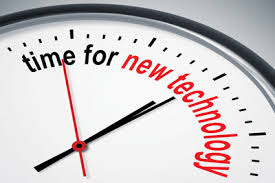Five main obstacles that could hinder the responsible adoption of AI-based technologies and propose strategies to address them.
Companies are betting on AI—yet nearly all enterprise pilots are stuck at the starting line.
That dream of a universal electronic health record has proven elusive.
New AI tool to track vocalisation trends such as shouting and coughing in dementia patients and flagged in real time.
The emerging role of AI-based companions in the care of people with dementia, referencing brain-health startups.

 There is a labor shortage everywhere -- ditto in senior care. We know that one of the biggest issues in senior living (and home care, nursing homes, home health care) today is a shortage of labor. This
There is a labor shortage everywhere -- ditto in senior care. We know that one of the biggest issues in senior living (and home care, nursing homes, home health care) today is a shortage of labor. This  Design still needs to include older adults.
Design still needs to include older adults.  The
The  Are you starting to notice a pattern, so to speak? There seems to be a growing number of tech offerings that can see, sense, detect, and learn about behavioral patterns as part of new tools for older adults and their caregivers. Changes like these and others in this space will be addressed in a new report launching this month: "The Future of Sensors and Predictive Analytics for Older Adults." In the meantime, here are eight new offerings in the market that are designed to improve wellbeing and care. All text is drawn from the websites of the companies -- they are presented here in alphabetical order.
Are you starting to notice a pattern, so to speak? There seems to be a growing number of tech offerings that can see, sense, detect, and learn about behavioral patterns as part of new tools for older adults and their caregivers. Changes like these and others in this space will be addressed in a new report launching this month: "The Future of Sensors and Predictive Analytics for Older Adults." In the meantime, here are eight new offerings in the market that are designed to improve wellbeing and care. All text is drawn from the websites of the companies -- they are presented here in alphabetical order.  Voice assistants made device hardware actually seem smart.
Voice assistants made device hardware actually seem smart.  A well-known consulting firm assesses the growing care gap.
A well-known consulting firm assesses the growing care gap.  This was conceived by Andrea Cohen, Founder and Vice-Chair of HouseWorks, a home care company started in Boston. Andrea noted, "When employed to its fullest, remote care technology improves every aspect of how care is delivered in the home. Imagine what's possible when every stakeholder wins." The vision: Change the work process to produce Engaged Caregivers, a Connected Care Team, and Informed Families. Why does this matter now? The home care industry is enormously challenged today --
This was conceived by Andrea Cohen, Founder and Vice-Chair of HouseWorks, a home care company started in Boston. Andrea noted, "When employed to its fullest, remote care technology improves every aspect of how care is delivered in the home. Imagine what's possible when every stakeholder wins." The vision: Change the work process to produce Engaged Caregivers, a Connected Care Team, and Informed Families. Why does this matter now? The home care industry is enormously challenged today --